
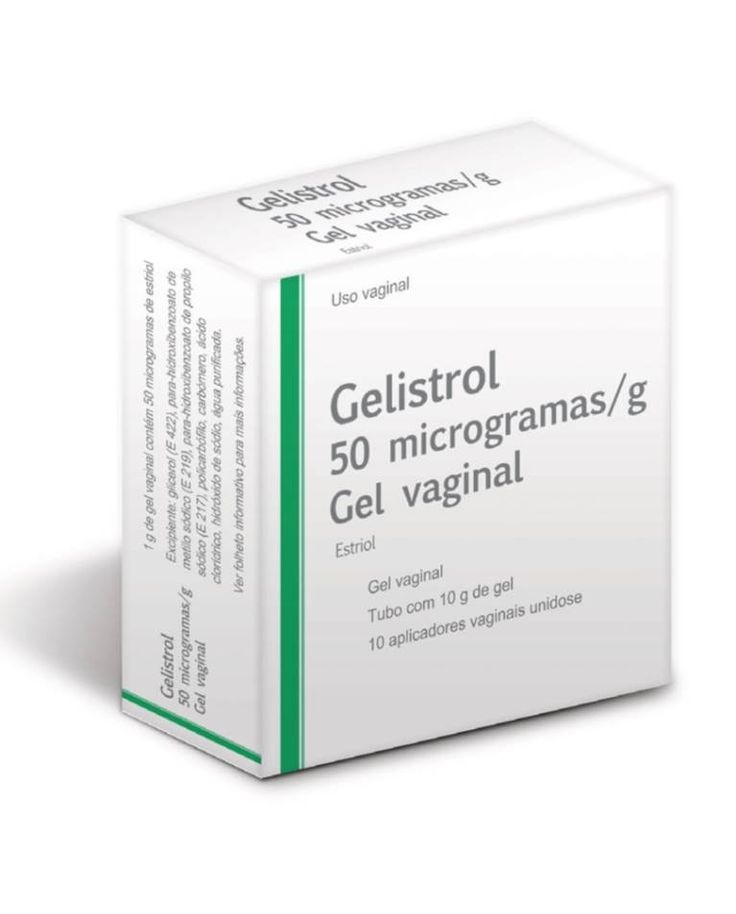
ГЕЛИСТРОЛ 50 микрограммов/г ВАГИНАЛЬНЫЙ ГЕЛЬ


Инструкция по применению ГЕЛИСТРОЛ 50 микрограммов/г ВАГИНАЛЬНЫЙ ГЕЛЬ
Введение
ПРОСПЕКТ: ИНФОРМАЦИЯ ДЛЯ ПОЛЬЗОВАТЕЛЯ
Гелистрол50 микрограммов/г вагинальный гель
Эстриол
Прочитайте внимательно весь листок-вкладыш перед началом использования этого лекарства, поскольку он содержит важную информацию для вас
- Сохраните этот листок-вкладыш, поскольку вам может понадобиться прочитать его снова.
- Если у вас есть какие-либо вопросы, проконсультируйтесь с вашим врачом или фармацевтом.
- Это лекарство было назначено вам, и его не следует давать другим людям, даже если у них такие же симптомы, как у вас, поскольку оно может нанести им вред.
- Если вы испытываете побочные эффекты, проконсультируйтесь с вашим врачом или фармацевтом, даже если это побочные эффекты, которые не указаны в этом листке-вкладыше. См. раздел 4.
Содержание листка-вкладыша:
- Что такое Гелистрол и для чего он используется
- Что вам нужно знать перед началом использования Гелистрола
- Как использовать Гелистрол
- Возможные побочные эффекты
- Хранение Гелистрола
- Содержание упаковки и дополнительная информация
1. Что такое Гелистрол и для чего он используется
Гелистрол относится к группе лекарств, называемых вагинальной (местной) гормонозаместительной терапией (ГЗТ).
Он используется для облегчения симптомов менопаузы в вагине, таких как сухость или раздражение. В медицинских терминах это известно как «вагинальная атрофия». Это вызвано снижением уровня эстрогена в организме и происходит естественным образом после менопаузы.
Гелистрол действует, восстанавливая эстроген, который обычно производится яичниками. Он вводится в вагину, чтобы гормон выделялся только там, где он необходим, и таким образом может облегчить неприятные ощущения на уровне вагины.
2. Что вам нужно знать перед началом использования Гелистрола
Медицинская история и осмотры
Использование гормонозаместительной терапии несет в себе риски, которые следует учитывать при начале или продолжении лечения.
Прежде чем начать (или возобновить) гормонозаместительную терапию, ваш врач спросит о вашей медицинской истории и истории вашей семьи. Возможно, ваш врач решит провести физический осмотр, который может включать осмотр груди и/или внутренний осмотр, если это необходимо.
После начала использования Гелистрола вам следует регулярно посещать вашего врача для проведения периодических осмотров (не менее одного раза в год). На этих осмотрах обсудите с вашим врачом пользу и риски продолжения использования Гелистрола.
Регулярно проходите маммографию, как рекомендует ваш врач.
Не используйте Гелистрол
- Если вы страдаете любой из следующих ситуаций или имеете сомнения относительно любой из них, проконсультируйтесь с вашим врачом перед использованием Гелистрола: если вы страдаете, страдали или подозреваете, что можете страдать раком молочной железы,
- если вы страдаете или подозреваете, что можете страдать раком, чувствительным к эстрогену, таким как рак эндометрия (внутреннего слоя матки),
- если у вас есть вагинальное кровотечение неизвестной причины,
- если вы страдаете аномальным ростом эндометрия (гиперплазией эндометрия), который не лечится,
- если вы страдаете или ранее страдали тромбами в венах ног (глубокой венозной тромбозом) или в легких (пульмонной эмболией),
- если у вас есть нарушение свертываемости крови (например, дефицит белка C, белка S или антитромбина),
- если вы страдаете или недавно страдали заболеваниями, вызванными тромбами в артериях, такими как инсульт, стенокардия или сердечный приступ,
- если вы страдаете или ранее страдали острым заболеванием печени, и ваши анализы функции печени не нормализовались,
- если вы страдаете порфирией (редким наследственным метаболическим заболеванием),
- если вы аллергичны (гиперчувствительны) к эстриолу или любому другому компоненту Гелистрола (включая раздел 6 «Дополнительная информация»).
Если любая из этих условий появляется впервые во время использования Гелистрола, немедленно прекратите использование и проконсультируйтесь с вашим врачом.
Предостережения и меры предосторожности
Это лекарство вводится путем введения аппликатора в вагину. Это может вызвать дискомфорт или боль у женщин с тяжелой вагинальной атрофией (сужением или воспалением стенок вагины).
Пожалуйста, сообщите вашему врачу, если вы страдаете или страдали любыми из следующих заболеваний/расстройств, которые в редких случаях могут повториться или ухудшиться во время лечения Гелистролом. Если это так, вам следует чаще посещать вашего врача для медицинских осмотров:
- очень высокий уровень жира в крови (триглицеридов)
- рост ткани, выстилающей внутреннюю поверхность матки, вне ее (эндометриоз) или предшествующие случаи чрезмерного роста ткани, выстилающей матку (гиперплазия эндометрия)
- миомы матки
- высокое артериальное давление
- диабет
- камни в желчном пузыре
- мигрень или сильная головная боль
- редкое аутоиммунное заболевание, называемое системной красной волчанкой (СКВ)
- эпилепсия (припадки)
- бронхиальная астма
- заболевание, поражающее барабанную перепонку и слух (отоесклероз)
- задержка жидкости из-за проблем с сердцем или почками
- повышенный риск развития тромбов (см. «Тромбы в вене»)
- повышенный риск развития рака, чувствительного к эстрогену (например, если ваша мать, сестра или бабушка имели рак молочной железы)
- печеночная патология, такая как доброкачественная печеночная опухоль
- наследственный и приобретенный ангioneurotic отек
Причины для немедленного обращения к врачу
- желтуха (желтый цвет белого глаза и кожи) или нарушения функции печени
- внезапное повышение артериального давления
- если вы страдаете мигренью или сильной головной болью впервые
- беременность
- если происходит любая из обстоятельств, описанных в разделе «Не используйте Гелистрол».
- если у вас есть признаки тромба в крови, такие как:
- болезненный отек и покраснение ног
- внезапная боль в груди
- затруднение дыхания.
Для более подробной информации см. «Тромбы в вене (тромбоз)».
Если происходит любая из вышеуказанных ситуаций, ваш врач может cần временно прекратить лечение и предложить альтернативное лечение.
Примечание: Гелистрол не является контрацептивом. Если прошло менее 12 месяцев с момента вашей последней менструации или если вам меньше 50 лет, вам может потребоваться использовать дополнительные методы контрацепции, чтобы избежать беременности. Проконсультируйтесь с вашим врачом, чтобы он посоветовал вам.
Гормонозаместительная терапия и рак
Чрезмерный рост ткани, выстилающей внутреннюю поверхность матки (гиперплазия эндометрия), и рак ткани, выстилающей матку.
Прием таблеток ГЗТ, содержащих только эстроген, в течение длительного времени может увеличить риск развития рака эндометрия (внутреннего слоя матки).
Неясно, существует ли подобный риск с Гелистролом при его использовании для повторных или длительных лечений (более 1 года). Однако было показано, что абсорбция Гелистрола в крови очень низка; поэтому добавление прогестагена не необходимо.
Если у вас出现ят кровотечение или пятна, обычно нет причин для беспокойства, но вам следует записаться на прием к врачу. Это может быть признаком того, что эндометрий стал толще.
Следующие риски относятся к лекарствам гормонозаместительной терапии(ГЗТ), которые циркулируют в крови. Однако Гелистрол используется для местного лечения в вагине, и абсорбция в крови очень мала. Менее вероятно, что расстройства, упомянутые ниже, ухудшатся или повторятся во время лечения Гелистролом, но вам следует проконсультироваться с врачом, если вы обеспокоены.
Лечение лекарствами, содержащими более высокие дозы эстрогена, которые могут повысить уровень эстрогена в крови (например, таблетки или пластыри), увеличивает риск чрезмерного роста эндометрия (гиперплазии эндометрия), определенных типов рака, таких как рак молочной железы и эндометрия, и тромбов в венах.
Рак молочной железы
Доступные данные указывают на то, что использование Гелистрола не увеличивает риск развития рака молочной железы у женщин, которые ранее не имели рака молочной железы. Неизвестно, можно ли использовать Гелистрол безопасно у женщин, которые ранее имели рак молочной железы.
Регулярно осматривайте свою грудь. Проконсультируйтесь с вашим врачом, если вы заметите какие-либо изменения, такие как:
- морщины на коже
- изменения в соске
- любые уплотнения, которые вы можете увидеть или прощупать
Кроме того, вам рекомендуется участвовать в программах скрининга молочной железы, когда они вам предлагаются.
Рак яичников
Рак яичников редок: намного реже, чем рак молочной железы. Использование ГЗТ, содержащей только эстроген, было связано с немного более высоким риском развития рака яичников.
Риск развития рака яичников варьируется с возрастом. Например, у женщин в возрасте 50-54 лет, которые не принимают ГЗТ, примерно 2 женщины из 2000 могут быть диагностированы с раком яичников в течение 5-летнего периода. Для женщин, которые принимали ГЗТ в течение 5 лет, будет примерно 3 случая на 2000 пользователей (т.е. примерно 1 случай больше).
Влияние гормонозаместительной терапии на сердце и кровообращение
Тромбы в вене
Риск тромбов в венахпримерно в 1,3-3 раза выше у женщин, которые используют гормонозаместительную терапию, чем у тех, кто не использует ее, особенно в течение первого года лечения.
Тромбы могут быть серьезными и, если они перемещаются в легкие, могут вызвать боль в груди, одышку, обморок или даже смерть.
Вероятность развития тромба в венеувеличивается с возрастом и если вы страдаете любой из следующих ситуаций. Сообщите вашему врачу, если любая из этих ситуаций относится к вам:
- вы не можете ходить в течение длительного периода из-за хирургического вмешательства, травмы или заболевания,
- у вас есть значительный избыточный вес (ИМТ > 30 кг/м2),
- у вас есть проблема со свертываемостью крови, требующая длительного лечения лекарствами, предотвращающими тромбы в крови,
- если у близкого родственника был тромб в ноге, легком или другом органе,
- у вас есть системная красная волчанка (СКВ),
- у вас есть рак.
Сравнение
В среднем 4-7 из 1000 женщин в возрасте 50 лет, которые не проходят гормонозаместительную терапию, в течение 5-летнего периода могут иметь тромб в вене. У женщин в возрасте 50 лет, которые прошли гормонозаместительную терапию только с эстрогеном в течение более 5 лет, будет 5-8 случаев на 1000 пользователей (т.е. 1 случай больше).
Заболевания сердца (инфаркт миокарда)
Женщины, которые принимают только эстроген, не имеют более высокого риска развития заболеваний сердца.
Инсульт
Риск инсульта примерно в 1,5 раза выше у женщин, которые используют гормонозаместительную терапию, чем у тех, кто не использует ее. Количество дополнительных случаев инсульта, связанных с использованием гормонозаместительной терапии, увеличивается с возрастом.
Сравнение
В среднем 8 из 1000 женщин в возрасте 50 лет, которые не проходят гормонозаместительную терапию, в течение 5-летнего периода могут иметь инсульт. У женщин в возрасте 50 лет, которые прошли гормонозаместительную терапию в течение более 5 лет, будет 11 случаев на 1000 пользователей (т.е. 3 случая больше).
Использование Гелистрола с другими лекарствами
Сообщите вашему врачу или фармацевту, если вы используете, недавно использовали или можете использовать любое другое лекарство, включая безрецептурные лекарства, растительные средства или другие натуральные продукты.
Поскольку Гелистрол содержит очень низкую дозу эстриола и используется для местного лечения, не ожидается, что он будет взаимодействовать с другими лекарствами. Однако следует учитывать взаимодействия с другими местными вагинальными препаратами.
Беременность, лактация и фертильность
Если вы беременны или кормите грудью, считаете, что можете быть беременной или планируете стать беременной, проконсультируйтесь с вашим врачом или фармацевтом перед использованием этого лекарства.
Не используйте Гелистрол, если вы беременны.
Если вы становитесь беременной во время лечения, сообщите вашему врачу немедленно и не используйте Гелистрол.
Не используйте Гелистрол во время лактации.
Вождение и использование машин
Гелистрол не влияет на способность управлять транспортными средствами и использовать машины.
Гелистрол содержит
Метилпараоксибензоат натрия (Е 219) и пропилпараоксибензоат натрия (Е 217).
Не используйте это лекарство, если вы аллергичны к любому из его компонентов.
3. Как использовать Гелистрол
Следуйте точно инструкциям по применению Гелистрола, указанным вашим врачом или фармацевтом. В случае сомнений проконсультируйтесь с вашим врачом или фармацевтом.
Рекомендуемая доза в течение первых трех недель лечения составляет одну применение в день, предпочтительно перед сном. После 3 недель использования ваши симптомы должны уменьшиться, и дозу следует уменьшить. Вам может потребоваться только одно применение дважды в неделю.
Используйте аппликатор для введения геля в вагину (рекомендуется перед сном).
Ваш врач постарается назначить вам самую низкую дозу для лечения вашего симптома в течение необходимого времени. Проконсультируйтесь с вашим врачом, если вы считаете, что эта доза слишком сильна или не достаточно сильна.
Следующие инструкции объясняют, как использовать гель.
На следующей иллюстрации вы можете увидеть все компоненты трубки и аппликатора, состоящие из канюли и поршня.
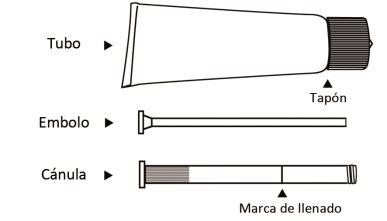
- Открутите крышку трубки, переверните крышку и используйте острый конец, чтобы разорвать упаковку на горлышке трубки. Не используйте, если упаковка повреждена.

- Выньте канюлю и поршень. Вставьте белый поршень вдоль канюли. Закрутите канюлю на конце трубки.

- Сожмите трубку, чтобы наполнить аппликатор гелем до отметки наполнения. Аппликатор остановится на отметке.
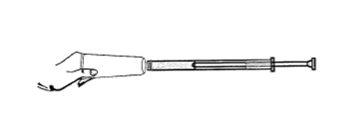
- Открутите канюлю от трубки и снова закрутите крышку на трубке.

- Чтобы нанести гель, лягте, введите конец аппликатора глубоко в вагину и медленно нажмите поршень вниз.
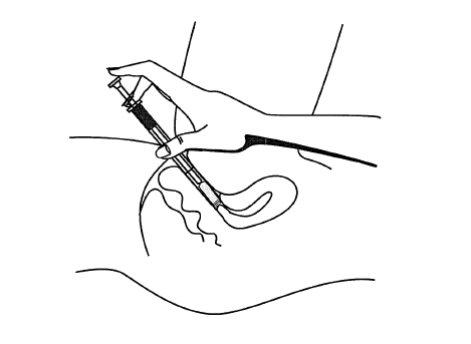
- После использования
- Трубка 10 г - 1 блистер с 10 одноразовыми канюлями и 1 многоразовым поршнем
- Трубка 30 г - 3 блистера с 30 одноразовыми канюлями и 1 многоразовым поршнем
Выньте поршень из канюли, выбросьте канюлю и тщательно промойте поршень чистой теплой водой, чтобы использовать его снова при следующем применении.

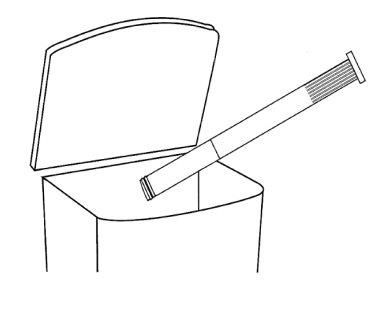
- Трубка 10г - 1 пакет с 1 многоразовой канюлей и 1 многоразовым поршнем
- Трубка 30г - 1 пакет с 1 многоразовой канюлей и 1 многоразовым поршнем
Выньте поршень из канюли и тщательно промойте канюлю и поршень чистой теплой водой, чтобы использовать их снова при следующем применении.

Если вы используете больше Гелистрола, чем должно быть
Если вы нанесли слишком много геля или кто-то случайно проглотил немного геля, не волнуйтесь. Вы можете чувствовать себя плохо, и у некоторых женщин может появиться вагинальное кровотечение через несколько дней.
В случае передозировки или случайного приема внутрь немедленно проконсультируйтесь с вашим врачом или фармацевтом или позвоните в Центр токсикологической информации, телефон: 91 562 04 20, указав лекарство и количество, принятое внутрь.
Если вы пропустили применение Гелистрола
Не используйте двойную дозу, чтобы компенсировать пропущенные применения.
Нанесите пропущенную дозу, когда вы вспомните, если с момента последнего применения прошло не более 12 часов. В противном случае просто пропустите пропущенную дозу.
Если у вас есть какие-либо другие вопросы о использовании этого лекарства, проконсультируйтесь с вашим врачом или фармацевтом.
4. Возможные побочные эффекты
Как и любой другой препарат, это лекарство может вызывать побочные эффекты, хотя не все люди испытывают их.
Сообщите своему врачу немедленно, если возникает любая из обстоятельств, описанных в разделе «Что нужно знать перед началом использования Гелистрола», например, вагинальное кровотечение. Возможно, вашему врачу потребуется прервать лечение и предложить другую альтернативу.
В начале лечения может возникнуть раздражение или зуд в вагине. У большинства пациенток эти побочные эффекты исчезают при продолжении использования. Сообщите своему врачу, если у вас возникло вагинальное кровотечение или если любой из следующих побочных эффектов ухудшился или продолжается.
Частые побочные эффекты (могут возникать у до 1 из 10 человек):
- Зуд, раздражение внутри или вокруг влагалища.
Редкие побочные эффекты (могут возникать у до 1 из 100 пациентов):
- Боль в нижней части живота,
- раздражение кожи,
- вагинальная эрозия,
- головная боль,
- кандидоз (вагинальная инфекция).
Следующие заболевания чаще встречаются у женщин, принимающих гормональные препараты, циркулирующие в крови, по сравнению с женщинами, не принимающими гормональные препараты. Эти риски возникают реже при вагинальных препаратах, таких как Гелистрол:
- Тромбы в венах ног или легких (тромбоэмболия).
- Рак яичников.
- Инсульт.
- Вероятная потеря памяти, если гормональная терапия начинается после 65 лет.
Для получения более подробной информации об этих побочных эффектах см. Раздел 2.
Были сообщены следующие побочные эффекты, связанные с другими гормональными препаратами.
- заболевания желчного пузыря,
- различные кожные расстройства:
- пигментация кожи, особенно на лице или шее, известная как «родимые пятна» (хлоазма),
- болезненные узлы и красные пятна на коже (эритема узловая),
- кожная сыпь с красными пятнами или папулами в форме мишени (эритема многоформная).
Сообщение о побочных эффектах
Если вы испытываете любой побочный эффект, проконсультируйтесь с вашим врачом, фармацевтом или медсестрой, даже если это возможные побочные эффекты, которые не указаны в этом листке. Вы также можете сообщить об этом напрямую через Испанскую систему фармаковигиланса лекарственных средств для человека: https://www.notificaram.es. Сообщая о побочных эффектах, вы можете способствовать предоставлению более подробной информации о безопасности этого препарата.
5. Хранение Гелистрола
Хранить в недоступном для детей месте.
Не используйте это лекарство после истечения срока годности, указанного на упаковке.
Срок годности - последний день месяца, указанного на упаковке.
Хранить при температуре ниже 25°C.
Лекарства не следует выбрасывать в канализацию или мусор. Поместите упаковку и лекарства, которые вам больше не нужны, в пункт сбора SIGRE в аптеке. Если у вас есть сомнения, спросите у вашего фармацевта, как избавиться от упаковки и лекарств, которые вам больше не нужны. Таким образом, вы поможете защитить окружающую среду.
6. Содержание упаковки и дополнительная информация
Состав Гелистрола
Активное вещество - эстриол.
Наполненный аппликатор до отметки соответствует дозе 1 г вагинального геля. Каждый грамм геля содержит 50 микрограммов эстриола.
Другие компоненты: глицерин (Е 422), метилпараоксibenzoат, натрия соль (Е 219), пропилпараоксibenzoат, натрия соль (Е 217), поликарбофил, карбопол, гидроксид натрия, соляная кислота, очищенная вода.
Внешний вид Гелистрола и содержание упаковки
Это лекарство представляет собой бесцветный, прозрачный или слегка прозрачный вагинальный гель, содержащий алюминиевую трубку объемом 10 г или 30 г.
- Презентация 10г - Блистер с 10 одноразовыми трубками (канулами) и повторно используемым пистолетом.
Коробка из картона с трубкой Гелистрола объемом 10 г и блистером, содержащим 10 одноразовых трубок (канул), маркированных отметкой наполнения, и повторно используемым пистолетом.
- Презентация 10г - Пакет с 1 повторно используемой трубкой (канулой) и повторно используемым пистолетом.
Коробка из картона с трубкой Гелистрола объемом 10 г и пакетом, содержащим 1 повторно используемую трубку (каналу), маркированную отметкой наполнения, и повторно используемый пистолет.
- Презентация 30г - 3 Блистера с 10 одноразовыми трубками (канулами) и повторно используемым пистолетом каждый.
Коробка из картона с трубкой Гелистрола объемом 30 г и тремя блистерами, каждый из которых содержит 10 одноразовых трубок (канул), маркированных отметкой наполнения, и повторно используемый пистолет.
- Презентация 30г - Пакет с 1 повторно используемой трубкой (канулой) и повторно используемым пистолетом.
Коробка из картона с трубкой Гелистрола объемом 30 г и пакетом, содержащим 1 повторно используемую трубку (каналу), маркированную отметкой наполнения, и повторно используемый пистолет.
Возможно, только некоторые размеры упаковок будут продаваться.
Владелец разрешения на продажу и ответственный за производство
Владелец разрешения на продажу:
ITALFARMACO, S.A.
San Rafael, 3 - 28108 Alcobendas (Мадрид)
Производитель, ответственный за выпуск:
ITALFARMACO, S.A.
San Rafael, 3 - 28108 Alcobendas (Мадрид), ИСПАНИЯ
Местный представитель
Лаборатории EFFIK S.A.
San Rafael, 3 – 28108 Alcobendas (Мадрид), ИСПАНИЯ
Тел: + 34 91 3585273
Это лекарство разрешено к продаже в странах-членах Европейского экономического пространства под следующими названиями:
- Испания: Гелистрол 50 микрограмм/г вагинальный гель
- Швеция: Гелистрол 50 микрограмм/г вагинальный гель
- Франция: Гелистрол 50 микрограмм/г вагинальный гель
- Италия: Гелистрол 50 микрограмм/г вагинальный гель
- Португалия: Гелистрол 50 микрограмм/г вагинальный гель
- Греция: Гелистрол 50 микрограмм/г вагинальный гель
Дата последнего обновления этого листка:март 2022
Подробная и актуальная информация о этом лекарстве доступна на сайте Испанского агентства по лекарственным средствам и медицинским изделиям (AEMPS) http://www.aemps.gob.es/
- Страна регистрации
- Активное вещество
- Требуется рецептДа
- Производитель
- СоставGLICEROL (E 422) (100 mg mg), PARAHIDROXIBENZOATO DE METILO SODICO (E-219) (1,6 mg mg), PARAHIDROXIBENZOATO DE PROPILO SODICO (0.2 mg mg), HIDROXIDO DE SODIO (E 524) (C.S.PH 5.0 pH mg)
- Информация носит справочный характер и не является медицинской рекомендацией. Перед приемом любых препаратов проконсультируйтесь с врачом. Oladoctor не несет ответственности за медицинские решения, принятые на основе этого контента.
- Аналоги ГЕЛИСТРОЛ 50 микрограммов/г ВАГИНАЛЬНЫЙ ГЕЛЬФорма выпуска: ВАГИНАЛЬНЫЙ ПОЛУЖИДКИЙ ПРЕПАРАТ, 50 микрограмм/гАктивное вещество: ЭстриолПроизводитель: Italfarmaco S.A.Требуется рецептФорма выпуска: ВАГИНАЛЬНЫЙ СУППОЗИТОРИЙ/КАПСУЛА/ТАБЛЕТКА, 0,03 мгАктивное вещество: ЭстриолПроизводитель: Kern Pharma S.L.Требуется рецептФорма выпуска: ВАГИНАЛЬНЫЕ СВЕЧИ/КАПСУЛЫ/ТАБЛЕТКИ, 0,5 мг эстриолаАктивное вещество: ЭстриолПроизводитель: Aspen Pharma Trading LimitedТребуется рецепт




